
Written By:
Yor Madrio
In the world of higher education, social media has become an essential tool for promoting your school, connecting with current and prospective students, and sharing important news and events. However, simply having a presence on social media isn't enough when it comes to enrollment goals.
To effectively reach your audience and achieve your enrollment goals, your institution will need to develop an in-depth social media strategy that encompasses everything from audience analysis, to content creation, to performance measurement.
What Is the Purpose of a Social Media Strategy?
A social media strategy establishes a clear plan on how your university or college should use social content to achieve various business goals.
Some examples of these goals may include:
- Increasing brand awareness
- Engaging with students and alumni
- Promoting programs and courses
- Boosting enrollment
A well-defined social media strategy guides institutions on how to identify their target audiences, select appropriate channels, create relevant and engaging content, and measure the effectiveness of these efforts. By developing and implementing a social media strategy, universities and colleges can enhance their online presence, create stronger relationships with their audiences, and ultimately achieve greater success in their marketing and outreach efforts.
If you want to develop a strong social media strategy, but don’t know where to start, here’s an overview of the steps you need to take to ensure your school’s social media helps achieve your institution’s business goals.
Download our free Social Media Checklist for more tips!

5 Things a Higher Education Social Media Strategy Needs
1. Multiple Social Media Channels
It is important to include various channels in your social media strategy, especially in higher education. This is because each platform attracts different audiences and serves different goals. By using a diverse set of social media channels, institutions can reach a broader range of audiences and promote their brand and message more effectively.
Choosing the right platforms to focus on in your social media strategy is essential to its success. Here are a few social channels you can leverage, as well as their general audiences to ensure the ones you choose align with your strategy.
Only join as many channels that your capacity allows. It is counter productive to have a presence on all the channels, but only have the time to regularly manage and optimize two of them, for example.
Studies show that around 43.5% of Facebook users are aged 35–64, typically the age of a parent. On the other hand, 42.7% of users are aged 18–34, which is close to the average age of a prospective student. To cater to this audience, institutions should create content that is engaging and informative, such as event announcements and student spotlights.
Here’s a list of goals you can set that will help you engage with your Facebook audience:
- Increase engagement and interaction with followers by creating informative and engaging content that encourages comments, likes, and shares
- Promote campus events and activities to a broad audience by creating event pages and sharing them on the platform

X
X's general audience is diverse but tends to skew toward a younger demographic, with 57.9% of users aged 18–34. To cater to this audience, institutions should create content that is short and informative, such as student-organization or event announcements.
Here are some goals that will help you boost engagement on your X page:
- Increase visibility and reach by using hashtags and reposts to engage with a wider audience
- Share real-time updates and news about campus events and activities to keep followers informed
- Use the platform as a customer service tool, responding to questions and concerns from followers in a timely and helpful manner
- Create a “Space” where students can have live audio conversations with each other from the mobile app
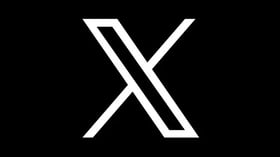
Over 62% of Instagram’s users are aged 18–34., While Instagram’s audience primarily consists of students, parents do have a presence as well. To cater to this audience, institutions should create visual content that is appealing. This can include photos of campus events, student activities, and behind-the-scenes glimpses of campus life.
Here’s what some of the most popular college Instagram accounts are doing on Instagram:
- Showcase campus life and activities by sharing visually appealing photos and videos
- Promote events and activities through Instagram stories and highlights
- Use the platform to engage with followers through likes, comments, and direct messages

LinkedIn's audience is generally younger, with 81.7% aged 18–34.l, The platform’s user-base is very professional, consisting of alumni, employers, and prospective students. To cater to this audience, institutions should create informative and professional content. This can include infographics, and blog posts.
Here’s how to engage your LinkedIn audience:
- Promote academic programs and success stories to a professional audience, including alumni and employers
- Use the platform for recruitment and job postings to attract prospective students and connect them with potential employers
![]()
TikTok
TikTok is a new, growing platform that represents creators from every generation, culture, workplace, and more. Around 60% of TikTok’s age demographic falls between 16 to 24 years old—around the same age range as your prospective students. To cater to your TikTok audience, you should post content that is informational, personal, and aesthetically pleasing. This could include student interviews, a resume building guide, or how your campus changes from season to season.
Here’s how to engage your TikTok audience:
- Post personal moments that your prospective students can relate to and feel included in
- Showcase how fun it is to be on campus through event highlights
- Interact with your audience through the comments if they raise any questions/concerns
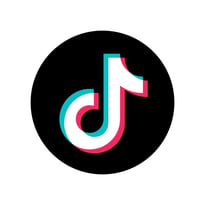
2. Content Planning and Publishing Process
Having a content calendar—a publishing schedule for upcoming content—is important for several reasons. First, it allows you to plan and organize your social media in advance, ensuring you have a consistent stream of relevant and engaging content. This can help you avoid last-minute scrambling to come up with new content ideas.
A content calendar also allows you to align your social content with important events, dates, and initiatives on campus, such as open houses, application deadlines, and alumni events. This can help you increase engagement and visibility by promoting relevant content at the right time.
There are several aspects of a content calendar that you need to be aware of to ensure maximum efficiency.
There are great online resources you can use to set up your first content calendar. We recommend HubSpot’s marketing calendar when first starting off. They provide a quick-and-easy solution to creating a content calendar from start to finish!
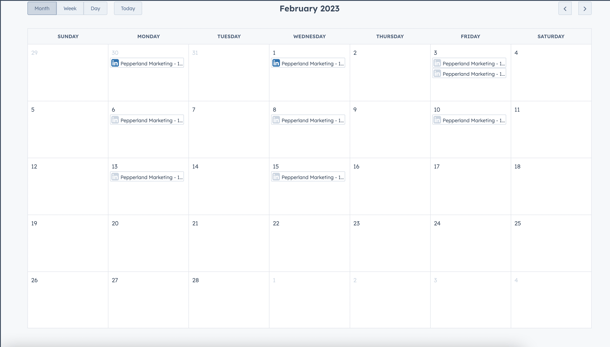
Content Calendar
A content calendar is a tool used to plan, organize, and schedule content in advance. The purpose of a content calendar is to ensure that content is consistently posted on social media platforms. A content calendar can also help you align your social media content with important events, dates, and initiatives, and enable you to track your posts’ performance.
Here are some examples of social media content calendar programs you can use to automate your tasks:
Themes and Topics
Your posts should follow similar topics according to the platform. For example, most people use X as a real-time news source, while Instagram users are looking for aesthetically pleasing visual content. Tailoring your posts toward the platform’s intent will most likely boost engagement with your posts.
Here are some examples of themes and topics that could be covered on the different social media platforms we’ve discussed:
- Facebook: Ideal for campus events, academic program spotlights, and financial aid resources
- X: Best used to share university news, school news, and campus resource information
- Instagram: Perfect platform to promote campus life, student activities, and academic programs
- LinkedIn: Optimal social media channel to showcase alumni success stories, career development resources, and industry connections
- TikTok: Perfect for sharing informational resources like guides through the application process, financial aid, and more
Posting Frequency
Each social media platform has a unique algorithm that will rank your posts based on recency, interaction, and relevance. However, consistent posting over long periods of time provides more benefits than sporadic intervals of high-volume posting.
Here’s an overview of what your content calendar might look like according to the previously mentioned platforms:
- Facebook: Between 1 to 2 times a day
- X: Between 1 to 5 times a day
- Instagram: Between 3 to 7 times a week
- LinkedIn: Between 1 to 5 times a day
- TikTok: Between 1 to 4 times a day
3. Community Engagement Strategies and Guidelines
A community engagement strategy—building and maintaining relationships with students, faculty, alumni, parents, and the community—is an essential component of any successful social media strategy in higher education. By engaging with these groups on social media platforms, higher education institutions can promote their mission, values, and accomplishments.
A community engagement strategy should include tasks such as responding to comments and messages, participating in online conversations, hosting events and contests, and collaborating with local businesses. It is important, however, to understand how to interact with your audiences to ensure you keep them engaged long-term.
How to Interact with the Audience
When interacting with your audience and community, you should always use a friendly tone. Being responsive is also a major factor in your engagement strategy, as many current and prospective students turn to social media for immediate information.
It is also a good idea to ask your community questions. This will help you get to know your audience better and gain an understanding of their attitudes, perceptions, and attributes.
Try to respond positively to any negative comments or just ignore them completely. Consider digging deeper into their dissatisfaction to ask them how you can improve. This will shine a positive light on your social accounts and make your school appear more approachable.
Guidelines for Responding to Comments and Messages
Every community engagement strategy should have a set of guidelines around responding to comments and messages that should be strictly followed. Some of these guidelines may include response time, brand voice, and signature.
Here are a few examples of community engagement strategy guidelines to help you get started:
- Respond in under 24 hours
- Maintain a friendly, informative tone
- Sign off each message with a set of initials (e.g., TR)
- Do not ask for passwords or phone numbers in direct messages
How you will leverage User-Generated Content
User-generated content is defined as content created by individuals, rather than a brand or organization. It is an integral part of any community engagement strategy. It not only creates content for your social media team, but it encourages students to get involved with campus culture.
Here are a few ways you can promote user-generated content in the engagement portion of your strategy:
- Have a weekly post that features user-generated content taken by a student
- Create a contest where people vote on the best on-campus photo
- Host an in-person event where people can show off their user-generated content to their peers
4. Key Performance Indicators and Reporting Methods
The purpose of performance measurement is to evaluate the effectiveness of the social media strategy and determine if it is meeting your goals. Performance measurement involves tracking and analyzing metrics such as engagement, reach, impressions, and clickthrough rates. By monitoring these metrics, you can identify areas where your social media strategy works well or needs improvement.
Performance measurement can help your social media team demonstrate the value of your efforts by providing concrete data on how they are supporting institutional goals such as increasing enrollment, promoting engagement, and building brand awareness to your school’s stakeholders.
We recommend HubSpot’s social media management tools to track your performance and measure ROI.
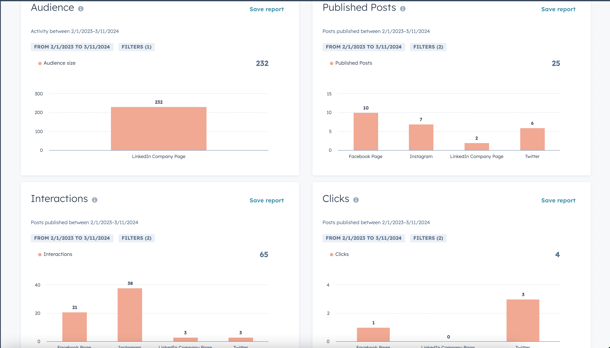
Key Performance Indicators of Each Platform
Your key performance indicators (KPIs) will vary depending on the goals you have set, as well as which platform you are currently monitoring. You may want to measure the clickthrough rate of a hyperlink on your Instagram bio, or you may want to measure the bounce rate of a landing page that you linked on X.
That being said, here are some common KPIs you should look out for when measuring your social media page’s performance:
- Engagement rate: Shows how much interaction you are achieving compared to your reach
- Reach: Indicates how many people have seen your post since it went live
- Audience growth rate: Reveals how much your audience is growing over time
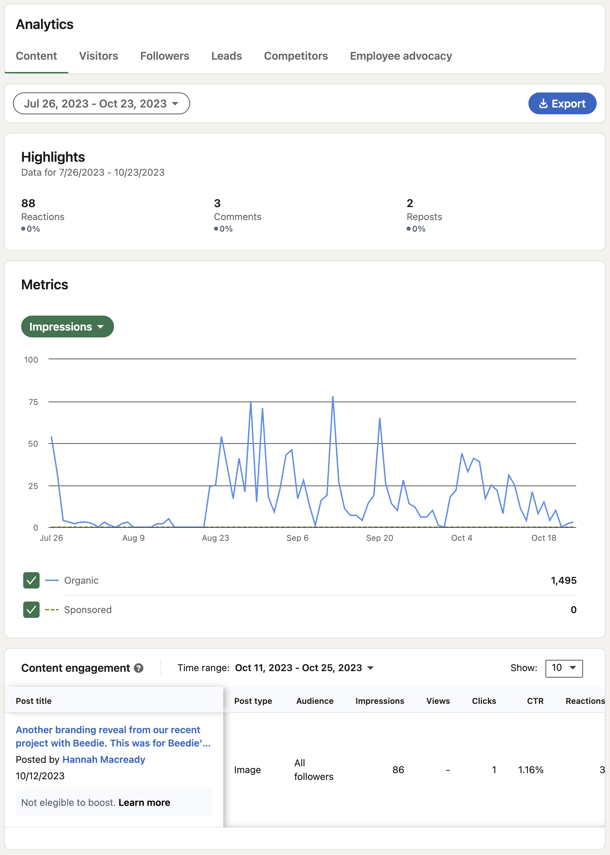
5. Strengthening Resources and Support
The resources of a social media team include the budget, industry tools, and institutional personnel. Each can impact the quality and effectiveness of your strategy. The more resources a team has, the more they can invest in creating high-quality content, analyze performance data, and engage with the audience.
Budget for Social Media Tools and Advertising
The budget for social media at your institution depends on a number of factors, including the size of your school, the amount of social media platforms you are active on, and the amount of engagement each post gets.
On top of the tools mentioned earlier, here are additional ones your team should consider purchasing if your budget allows:
For social media advertising, the user is mostly in control of how much money they would like to put into the post. Here are some average advertising costs for certain social media platforms:
- Facebook: $0.97 per click
- X: $5.26 per click
- Instagram: $0.20-$2.00 per click
- LinkedIn: $5.39 per click
- TikTok: $.50 to $1.00 per click
Staff Roles and Responsibilities
The different roles and responsibilities on your social media team will vary depending on the size of your school, your team’s skills, and your strategy’s goals.
Multiple roles can be filled by one person, depending on their skill set, while some roles aren’t necessary for the core operation of the team. However, there are some roles that are essential to any social media team, including:
- Social Media Manager
- Content Creator
- Paid Media Manager
- Analyst
- Community Manager
Training and Professional Development Resources
To develop your skills in social media—whether it is content creation, paid media, or something else—we recommend checking out HubSpot Academy and acquiring a certificate in social media marketing. They have great learning resources to help you gain the skills you need to become a well-rounded social media marketer.
Start Strategizing!
Now that you understand how to build a strong social media strategy, you might want to hit the ground running. However, it’s important to start slowly and not burn yourself out. Success is a long process. Consider utilizing online resources or asking for advice from someone who’s also trying to build a strong social media team in higher education.
If you need some help structuring a social media post, download Pepperland’s Social Media Pre-Publishing Checklist. We provide you with the tools necessary to ensure that each post you publish is of top-notch quality and won’t get lost in your students’ feeds.







